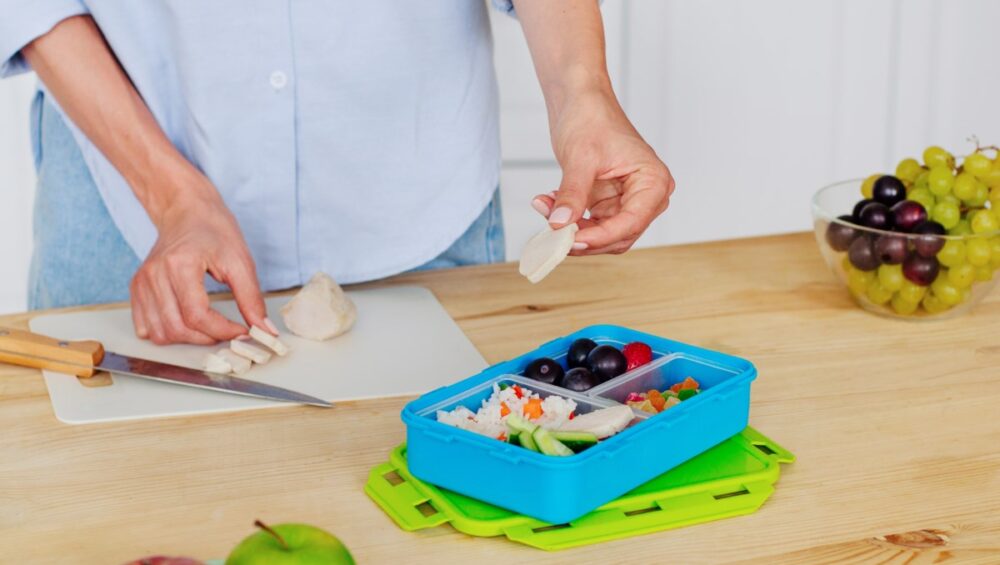Packing lunchboxes can be stressful, especially if you are trying to stay healthy, save money and not waste food at the same time. Here are some common mistakes that parents make when packing their kids’ lunchboxes:
Not having a plan
When packing your child’s lunchbox, you should always have a plan. Planning is important because it helps you to be prepared and saves time. If you know what your child is going to eat for the day, then there won’t be any last-minute panic about whether or not they’ll like what’s in their lunchbox. And planning can help save money too! You don’t want to buy ingredients for a meal only for it turn out that they don’t have time or aren’t hungry when that meal comes around again—and this can happen if unplanned lunches are thrown together at the last minute. Make sure that all of the ingredients needed for your plan are available before starting cooking so there aren’t any delays later on down the line when everyone fancies something different from what was originally planned!
Packing the same foods every day
If you pack the same foods every day, your kid will get bored of them. Not only that but they’ll start to eat less, which means they won’t be getting all the nutrients they need. This is especially important for young kids because their bodies are growing so fast!
Another reason to switch things up is that it might not be cost-effective to buy a bunch of new foods just because you want to try something new. Instead, look at how much food is already in your house and see what can be used for lunches. You can also try using ingredients from leftovers or even snacks as part of a meal plan for the week!
Not checking if it can be refrigerated
Insulated lunchboxes are great for keeping food at a consistent temperature but they’re not always necessary. For example, if your child is going to school on foot or by bike and will only be carrying their lunchbox for ten minutes before arriving at school, then there’s no need for an insulated container as long as you know what materials are used to create the box itself (i.e., plastic vs metal).
If you don’t have an insulated lunchbox, it’s important to check whether or not your child’s lunchbox can be refrigerated. If the lunchbox is not insulated, it will be too warm in the sun and too cold in the shade. It might also be too cold if left in a car.
Packing something that is difficult to eat without utensils
The lunch box is a great place to pack something that’s easy to eat, even without utensils. A container that opens up easily can help your child get at their food as soon as they open the lid.
You may also want to include a fork or spoon in your packed lunchbox so that your child will have a clean way of eating if they want it! Including napkins is also a good idea—they can be used not only for wiping hands but also for cleaning up spills. Finally, including straws can make drinking water easier when you don’t have access to cups (or simply prefer sipping straight out of the bottle).
Not including healthy drink options for your child
Drinks are an important part of a healthy lunchbox. The best drink for kids is water, but if your child prefers a different beverage, that’s okay too! Consider including a juice box or bottle of milk instead. If you’re going to pack juice or milk, remember not to add sugar—it can lead to tooth decay and weight gain. Another option is to provide your child with their own thermos for hot drinks (tea, coffee) so that it stays warm longer than when packed in a container.
Putting things in the lunchbox that will get soggy and gross
You know the feeling. You’ve been looking forward to eating your lunch at school, but when you open your lunchbox, everything inside is soggy. The bread on your sandwich has turned into a soggy mess, and even though you specifically packed pickles in a separate container, they have now become one with the rest of their contents.
This is not only gross—it also hinders proper digestion because food that isn’t dry cannot be broken down properly by our bodies. This can be avoided easily by following this simple rule: Don’t put anything in your lunchbox (or bag) that will get soggy!
This means that some popular foods are out of the question: sandwiches (with or without bread), most salads, and hard-boiled eggs come immediately to mind as having a high potential for going bad quickly inside a plastic container with no air circulation around them.





